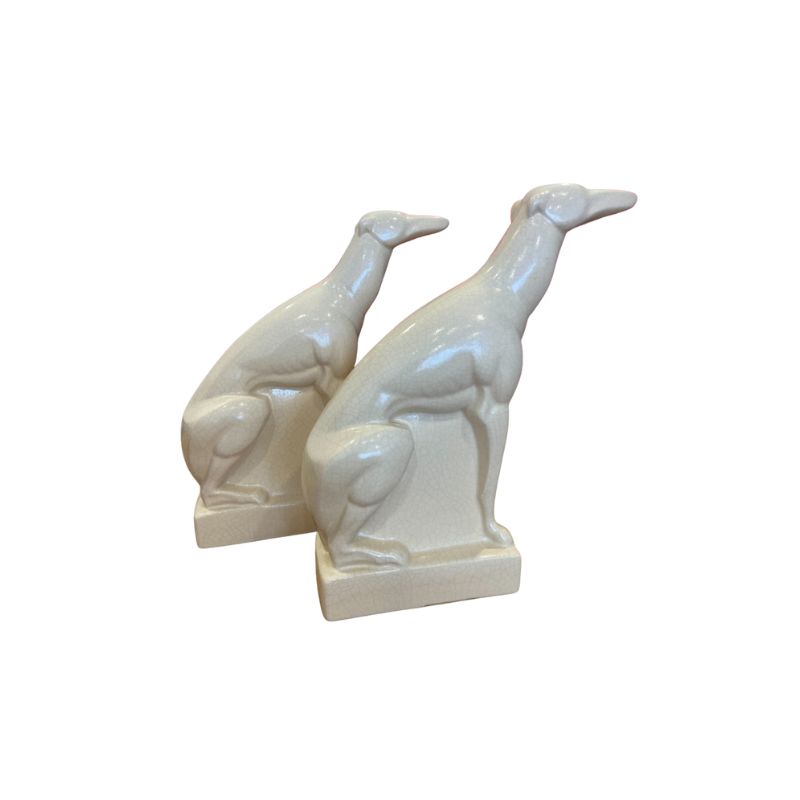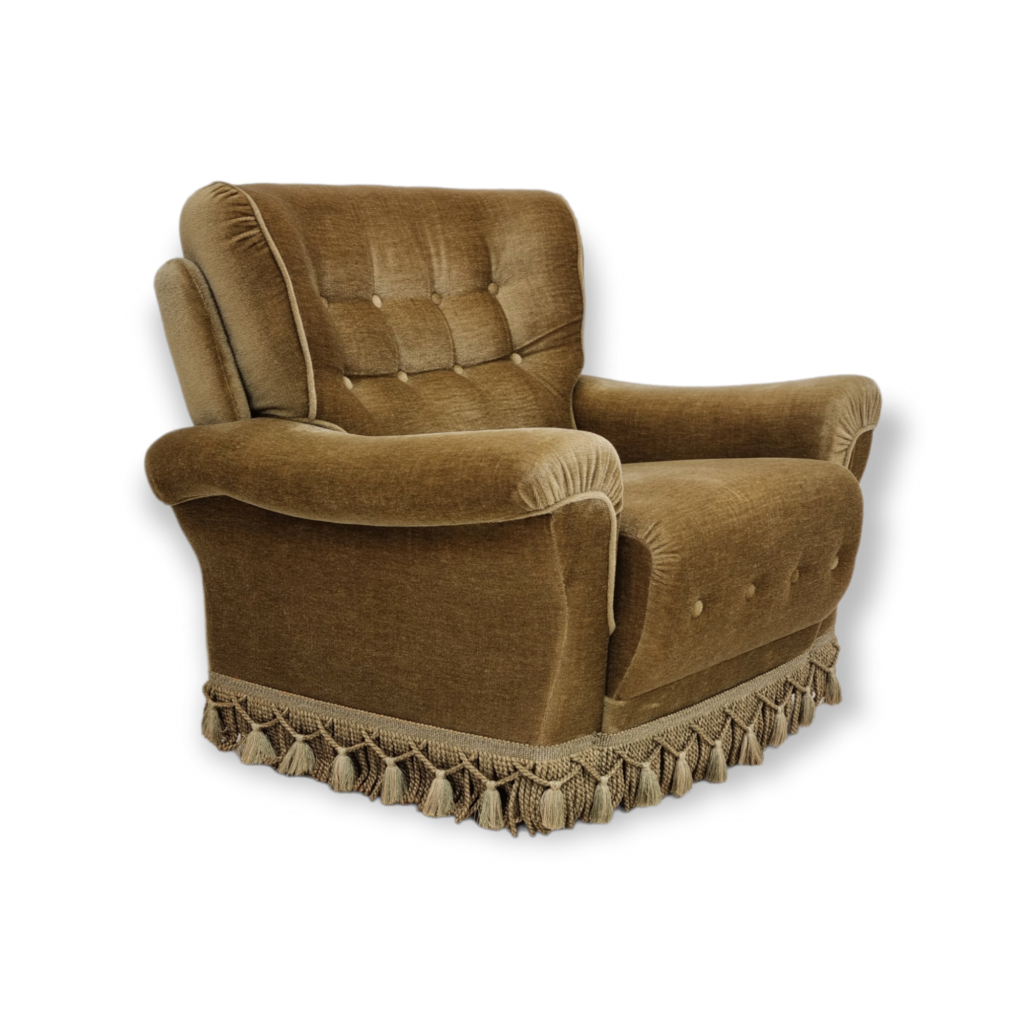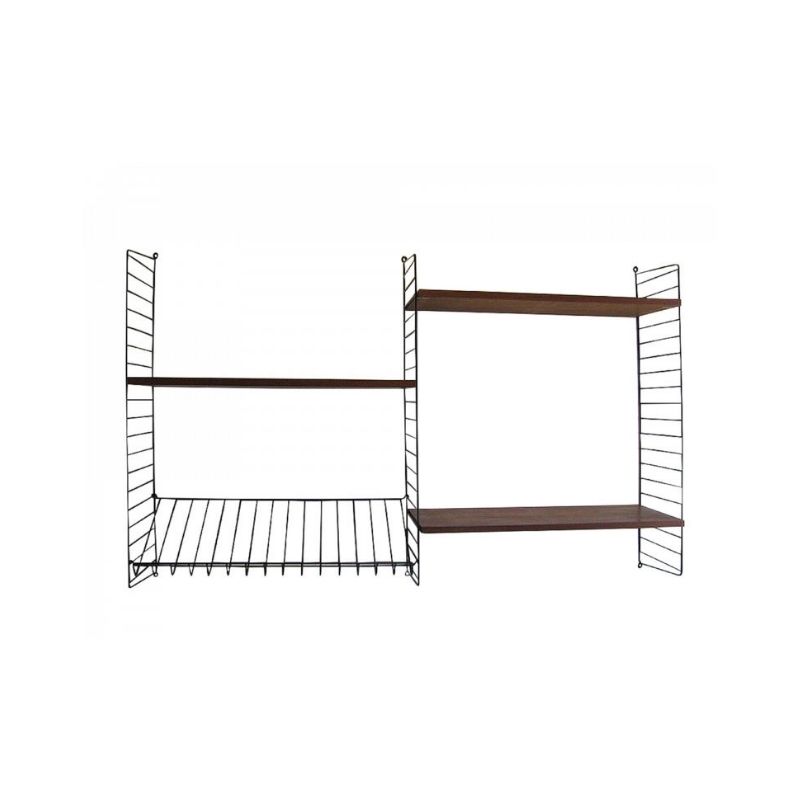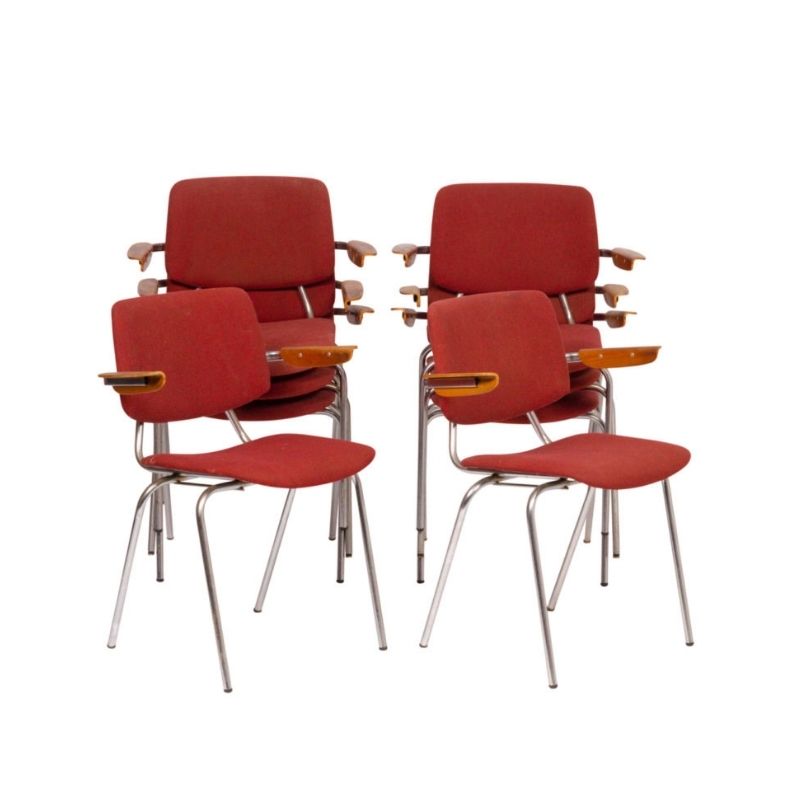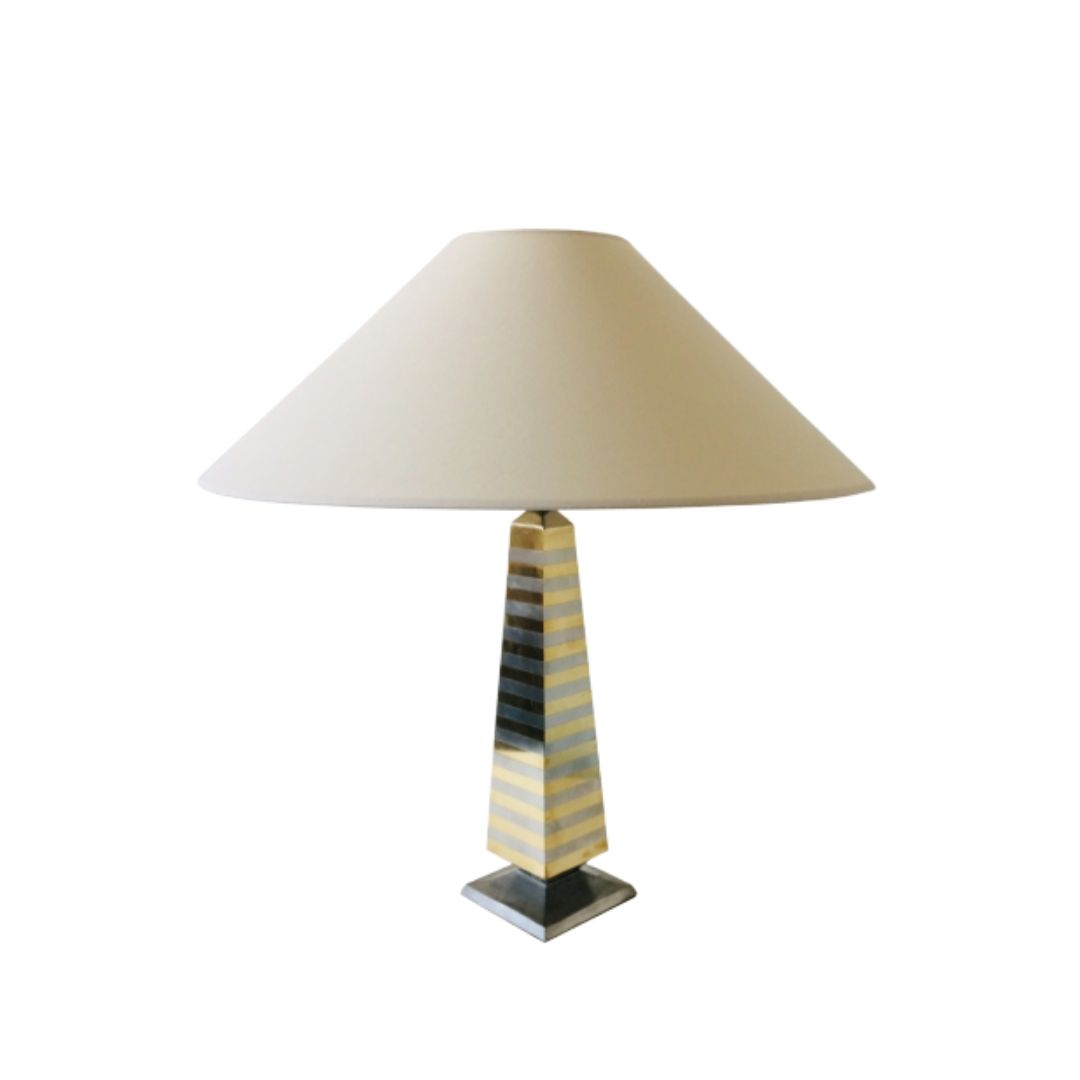Hi Everyone,
I recently picked up 4 matching early Evans Produced 5+2+5 Eames LCW chairs at an estate sale and am trying to decide how far to go in order to restore them.
What should, or can be done. Any advice or thoughts is much appreciated.
I’ve removed a layer of dirt from all chairs and some of the paint with Turpentine and 0000 steel wool on one of the chairs. (see pics) Just to try and ID the wood and also decide how to proceed.
I rubbed a bit hard on the seat and took a little patina off again to try and ID the wood and figure out what the hell to do!
All are labeled, have been drilled through and are missing backrest shocks.
Some chips in the veneer, but all chairs are super stable and solid.
The chairs were painted black at some point, on top of the original finish, which is flaking and cracking in some places.
I’m not sure if the chairs were clear coated out in the factory or if someone did that before painting them… The label is smooth and doesn’t seem raised which leads be to believe someone lacquered them?
I just don’t know how far to go, I obviously want to retain the value as much as possible, but they are super cool. I for sure don’t want to be over zealous and ruin them.
do I have the backrests repaired and re veneered?
What type of wood do you think this is?
do I take the chair down to original wood and re finish?
do I just clean them up a bit with turpentine and leave the finish as is?
do I have them all professionally restored?
Thanks in advance for any info or thoughts!!!!
Best,
Michael <img class="wpforo-default-image
<img class="wpforo-default-image
DCW not LCW
just clean filth so as to be usable and keep/swap as found
Unfortunately there's not really a fix to the "fix". Upholstery would be a great solution, but then it's a shame to cover over the seat that isn't drilled through. Upholstery of the seat and back will give the most pleasing results, however. Filling those holes would be a lot of work, just to see circular veneer patches when you're done
the bad repair can't be undone without a time machine, so don't attempt to restore, it's not possible
Hi again. Im still a bit confused. I've seen many of these chairs fully restored that are in far worse shape than mine. Again, most of the issues are paint and stain related.
The rather common issue of the drilled through seat backs have been "fixed" and addressed in numerous examples by furniture restorers all over the country...
Perhaps the structural integrity of these chairs is super solid due to the face that they have never been taken apart.
Does anyone else have any helpful advice?
Thanks!!
I don't know much about these other than that the backs are very prone to falling off, which everyone here knows. I had a pair once with screws in one back and the other original, then the original back fell off too and I did a ton of research into how to reattach it. My one attempt failed. I sold them and then swore off them forever and ever, amen.
I do have some experience with refinishing, though. It looks like chipping lacquer. This is very easy to test for---just put some acetone (nail polish remover) on a Q-tip and dab at the chipping finish in an inconspicuous area. If it's lacquer, it will begin to dissolve within 10-15 seconds. Acetone evaporates unbelievably fast so you will probably have to keep dabbing more on.
People used to use shellac to add a shiny new-looking finish to used furniture but it tends to alligator with age rather than chipping off the way yours is doing. Shellac can be tested the same way but with alcohol. Plain old rubbing alcohol works fine, though for overall stripping, denatured alcohol is more efficient.
I don't see how refinishing could hurt the value any more than what's been done to them already. I like the look of pony hide on the seats and backs of these chairs but that still leaves the issue of the painted backs. I think it might be possible to upholstery the backs with a minimal amount of padding under the hide---not enough to change the look of the curve noticeably but just enough to sort of level it out so that the screws don't show as bumps. If they were my chairs, I'd leave the bolts, but that may be just my history with the two i had.
(btw, the you can google LCW DCW COMPARISON and figure out for sure which you have. The seat height on the LCW is lower and slanted toward the back quite a bit more. I can't really tell with your camera angles for sure but they do sorta look like DCWs.)
If you do decide to do something with them, please update this thread with photos!
Thanks Spanky! I tested a bit of Minwax antique furniture refinisher in a little spot and decided to proceed with one of the chairs. That stuff works in minutes without rubbing at all! I just wiped the finish and the hack stain and paint job came right off with a cloth.
No sanding so far needed, and I've read it's safe to use on veneer as long as you are mindful.
I'm 90% convinced I'm dealing with a Mahgony set of DCW's I think I'll proceed with the other chairs without disassembling them and assess what I want to do about the chips and of course the drill holes. Thanks again!

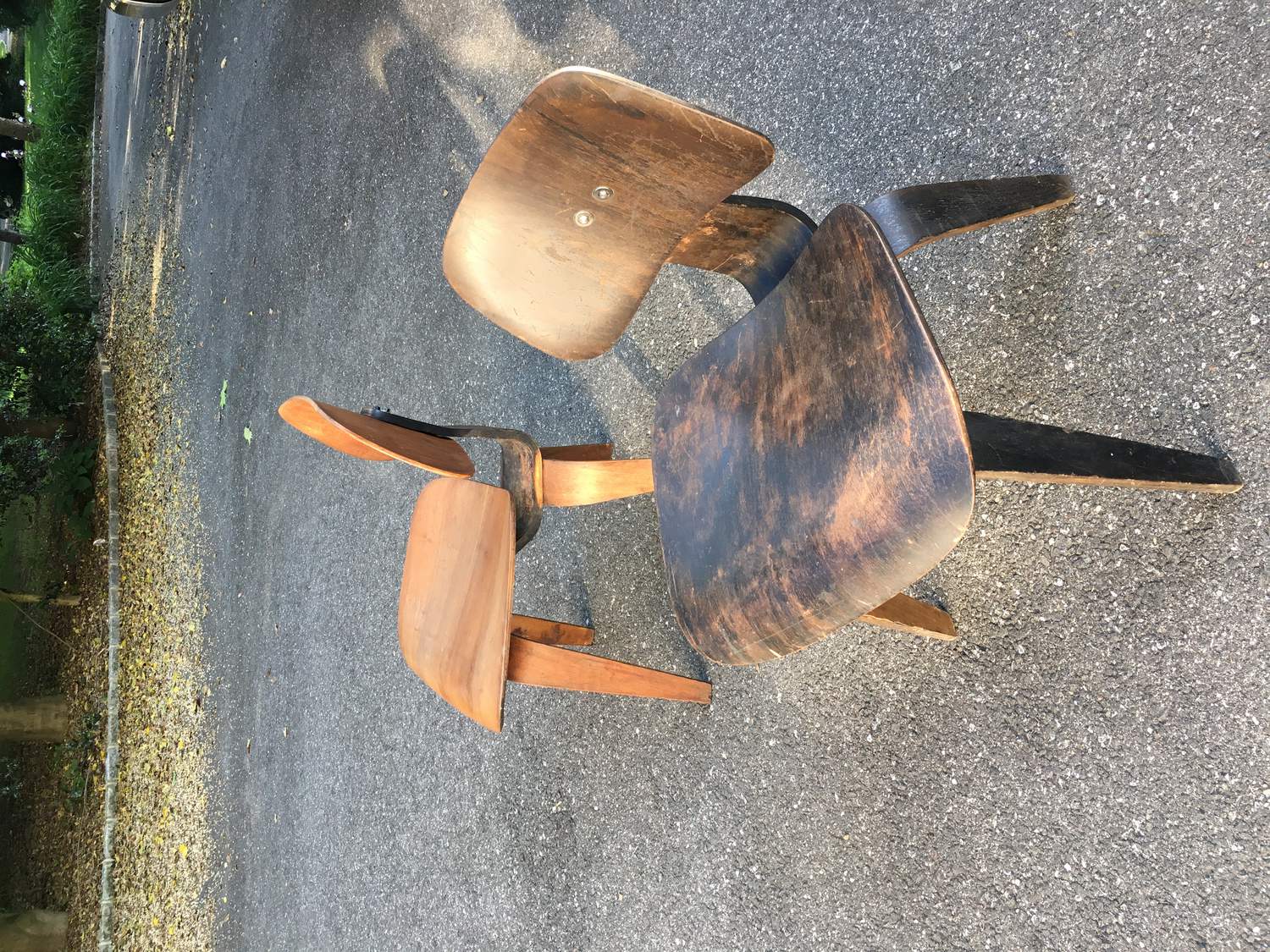
Great! Are you able to keep the stripper away from the labels?
I have never used that product. I just looked it up and found that it's just toluene, denatured alcohol, and acetone---which makes me think you're dealing with lacquer plus stain.
I hope you're using a respirator. Toluene is the stuff in glue that people get high on and die from if they get too much (though I'm sure you're not putting it in a paper bag and huffing it, and yes, I do get evangelical about respirators. I love my cheap little 3M respirator a LOT. I wish I had gotten it a long time ago.)
If you need any help, please contact us at – info@designaddict.com




